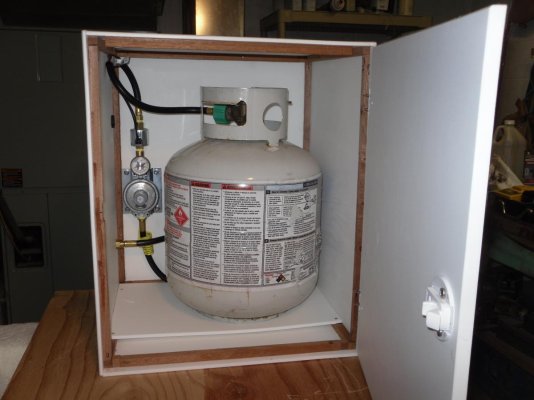Installing an off the shelf, compliant locker makes very good sense. Using an existing vessel locker, which is possible, is much more challenging. Among other things it can't be used for storage of other gear and it must have a horizontal rather than vertical hatch.
If the off the shelf locker you purchase is installed inside one of the vessel's own lockers ABYC does weigh in on how this must be done in order to remain compliant (see italicized section), saying...
"Lockers used to contain LPG cylinders, cylinder valves, regulating equipment and safety devices shall be designed to minimize the likelihood of use as a gear storage locker and shall be
1.8.1.1 vapor tight to the hull interior, and
1.8.1.2 located above the waterline, and
1.8.1.3 constructed of, or lined with, corrosion resistant materials, and
1.8.1.4 shall open only from the top with a gasketed cover that shall latch tightly, and
1.8.1.5 shall be capable of being quickly and conveniently opened without tools.
1.8.2 Installation
1.8.2.1 LPG lockers shall be installed so that the locker opens only directly to the outside atmosphere, and
1.8.2.2 if a LPG locker is installed inside a boat locker, the LPG locker shall be located as high and as close to the boat locker’s opening as possible in order to comply with A-1.8.2.1. (Italics mine)"
(Excerpted from ABYC A-1 Standards and Technical Information Reports for Small Craft July 15-16, this is not the complete standard)
The ABYC LPG standard, A-1, is among the shortest in the book, yet it is also among the most challenging with which to comply. If you are doing this yourself be sure you fully understand the requirements. If you are having someone else carry out the installation, ensure they agree to do so in a manner that is fully compliant with ABYC A-1.




 .
.


